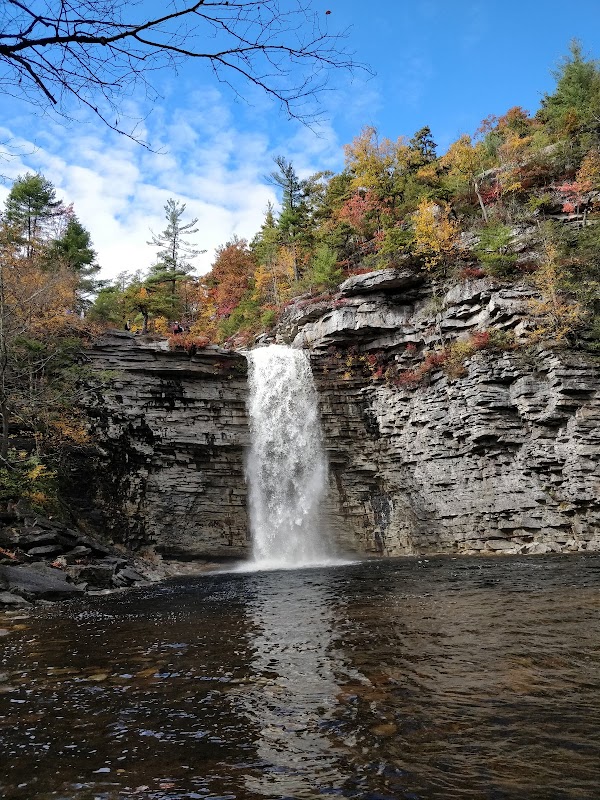
Navigating the Waters: Robert Moses Lighthouse Tours in Islip, New York
Robert Moses Lighthouse Tours in Islip, New York, offer an engaging coastal adventure combining easy hiking with rich maritime history. Explore a working lighthouse and enjoy sweeping water views along accessible paths, making this tour an ideal outing for all levels of outdoor enthusiasts.
Wear sturdy, closed-toe shoes
While the path is straightforward, gravel and uneven edges require supportive footwear to maintain stability.
Bring water, especially in summer
Coastal breezes can mask dehydration, so carry enough water to stay hydrated throughout the tour.
Plan your visit for mid-morning or mid-afternoon
These times offer softer light for photography and avoid peak sun or cooler late-day coastal chills.
Respect protected areas around the wetlands
Stay on marked paths to protect native vegetation and wildlife habitats during your visit.
Navigating the Waters: Robert Moses Lighthouse Tours in Islip, New York
Robert Moses Lighthouse stands firm at the edge of Fire Island Inlet, a beacon not just of light but of history and adventure. Located within Heckscher State Park near Islip, New York, this iconic lighthouse offers visitors a practical and invigorating experience that blends exploration with education. Tours provide a rare chance to step inside a working lighthouse and witness panoramic views of Long Island Sound and the Atlantic Ocean, inviting adventurers of all experience levels to engage with a fiercely elemental environment.
The tour itself is an accessible 0.6-mile roundtrip stroll from the parking lot, with well-maintained gravel paths and minimal elevation change—approximately 50 feet climbing—making it suitable even for casual walkers. As you approach, the breezes carry the salt-and-sea pungency, and the wetlands beside the path dare you to pause and notice their lively chorus of marsh birds and resilient grasses.
Inside, the lantern room crowns the journey, presenting sweeping coastal panoramas framed by the lighthouse’s gleaming windows. The structure itself, painted in vivid white and red, stands as a testament to maritime safety and local heritage dating back to 1869. Tours explain the technological evolution of lighthouses, illuminating the mechanics that keep coastal waters safe—an educational touch woven seamlessly into the adventure.
Planning your visit means preparing for variable coastal conditions. Footwear should be sturdy enough for gravel paths and stable on slightly uneven surfaces, while layered clothing guards against shifting winds. The lighthouse tour is best timed mid-morning or mid-afternoon to maximize natural light and avoid the harsher midday sun or late-day coastal chills.
Hydration remains essential, especially in summer months when the sun pushes forward from high skies, and the inlet’s breeze may delay recognition of thirst. The tour staff provide insightful narratives, enriching your understanding while the environment demands attentive presence—reminding every visitor that this is a place where history and nature move in concert.
Whether you’re drawn by the call of coastal history, the satisfaction of a light hike, or the promise of capturing perfect shoreline photos, Robert Moses Lighthouse tours offer an adventure that respects the fierce character of the sea while being practical in scope and scale. Take the opportunity to experience a lighthouse that is alive with stories, sound, and sight, where every step invites respect for the water’s force and the light it protects by.
Nearby Trips
All Adventures
Boat Charters
Water Activities
Adventures near Islip, New York
Discover the unique and memorable adventures that make Islip, New York special.
Frequently Asked Questions
How long does the Robert Moses Lighthouse tour usually take?
The entire tour, including the walk to and from the lighthouse and the interior visit, typically lasts between 30 to 45 minutes, making it ideal as a half-hour adventure within a larger day trip.
Are the trails to the lighthouse accessible year-round?
Yes, the trails are open year-round but weather conditions can affect footing. In winter, watch for icy patches; in spring and fall, trails may be muddy after rain.
Can children and seniors comfortably participate in the tour?
Absolutely. The route’s gentle elevation and stable paths make it accessible for families and older visitors, though some climbing and stairs inside the lighthouse require caution.
Is photography allowed inside the lighthouse?
Yes, photography is permitted, and the lantern room offers exceptional vantage points. Early or late daylight provides the best lighting conditions for crisp shots.
What wildlife might visitors encounter on the walk?
Expect to see marsh birds like egrets and herons. Occasionally, small mammals and a variety of shorebirds frequent the wetlands near the trail.
Are pets allowed on the tour or along the trail?
Pets are not allowed inside the lighthouse itself, but well-behaved dogs on leash can accompany you along the trail outside the immediate lighthouse grounds.
Recommended Gear
Sturdy walking shoes
Supports footing on gravel and uneven terrain during all seasons.
Water bottle
Keeps you hydrated, especially when temperatures rise and the wind delays thirst cues.
Layered clothing
Provides flexibility against changing coastal temperatures and wind chills.
Camera or smartphone
Captures panoramic lighthouse views and wildlife activity along the trail.
Local Insights
Hidden Gems
- "The small salt marsh off the main trail reveals subtle tidal movements and serves as a quiet spot to observe muskrats and marsh sparrows."
- "A lesser-known wooden bench by the inlet offers an unobstructed view of passing boats and occasional seals."
Wildlife
- "Ospreys frequently patrol the area, diving into the inlet’s waters with fierce precision."
- "Migratory shorebirds use the wetlands as a resting point, especially in spring and fall."
History
"Constructed in 1869, Robert Moses Lighthouse has guarded the Fire Island Inlet for over 150 years, playing a critical role in securing maritime travel along Long Island’s south shore. It's named after the influential urban planner Robert Moses, reflecting the region’s history of coastal development and preservation."
